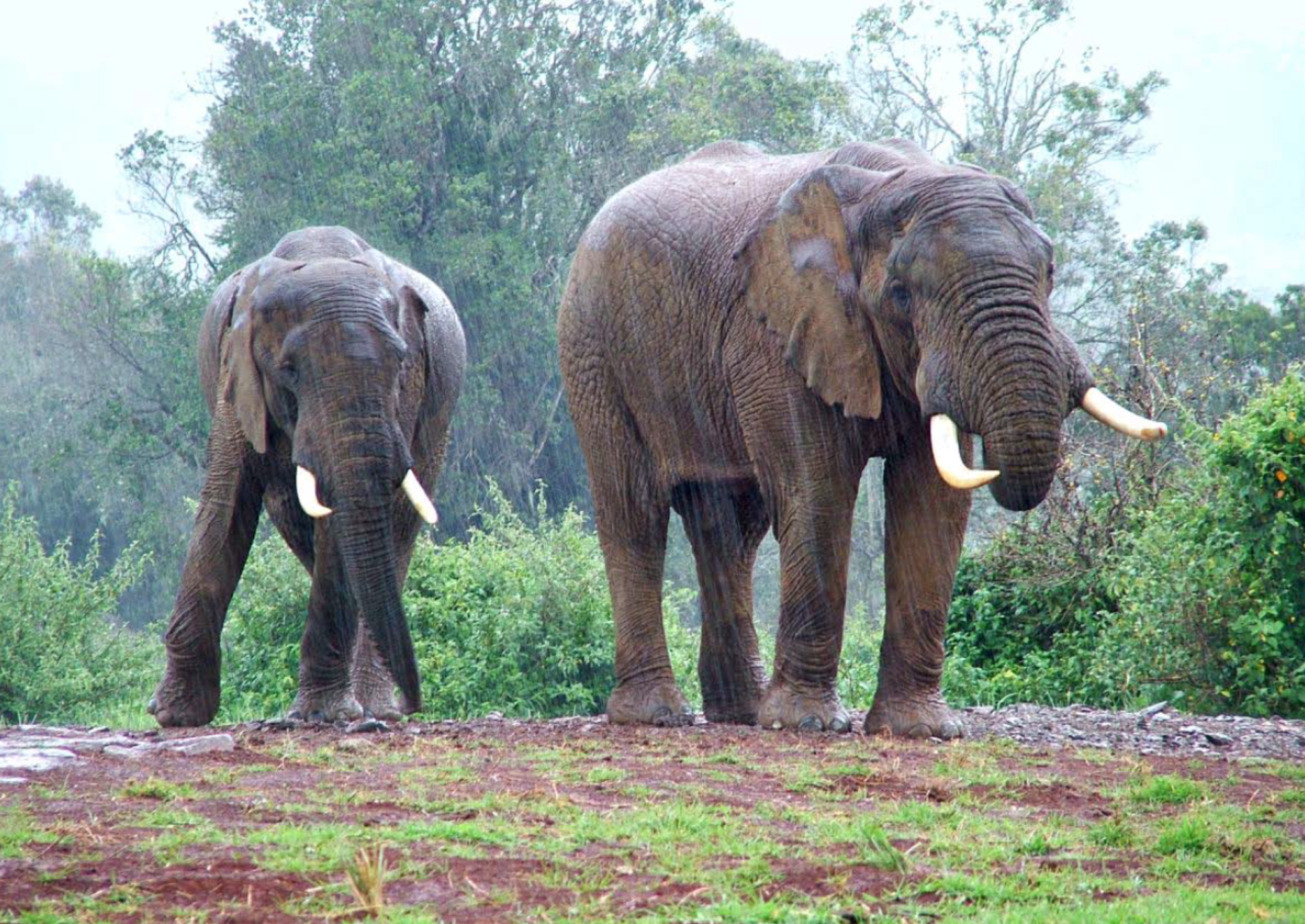Good fences make good neighbours in Kenya
Protecting habitat and engaging the local community are crucial for both rhinos and elephants, says Christian Lambrechts, the managing director of Rhino Ark

How do we protect some of the world’s most wondrous creatures? As one group of conservationists in East Africa, we think we found at least part of the answer. The Rhino Ark fence around the Aberdares conservation park is a terrific story. It took 21 years to build – and is now being replicated around Mount Kenya (a world heritage centre) and the Mau Escarpment (Mount Eburu). This is a protective measure which is actually working.
Addressing the challenges facing endangered wildlife species such as elephants and rhinos in Kenya and other parts of Africa requires the involvement of, and close collaboration between, all key stakeholders, in particular the local communities.
Local communities are ideally placed to support or even drive conservation efforts. Often projects can succeed or fail depending on support, or lack of it, from these communities. They contribute the leadership required to place conservation at the centre of the local development agenda, the manpower needed for projects to get off the ground, and the expertise, knowledge and internal intelligence for monitoring programmes.
When approaching conservation efforts, two key areas must be acknowledged. The first is that wild animals need space – space to roam, space to feed and space to raise their young. In short, they need a sustainable habitat in which to live. The second is that many wild animal habitats have significant human populations nearby. If we are to stand any chance of protecting our wild animal populations in Kenya, the solution to this human-wildlife conflict must be found.
Space for Giants recognises these issues, and its work acknowledges the importance of tackling them. As it stands, elephants, rhinos and other species face significant threats from ecosystem degradation and human-wildlife conflict, but also from poaching.
My organisation, Rhino Ark, has worked with Space for Giants on this pressing threat. We have interacted with magistrates to explore ways of improving the rates of prosecution with regard to wildlife crime.
In addition to this, together with the Kenya Wildlife Service (KWS) and Space for Giants, Rhino Ark has initiated the process of securing wildlife corridors, not least between Mount Kenya and the Aberdares.
Rhino Ark’s highest profile project has been the Aberdare Fence, a 400-kilometre electrified fence, completed in 2009, that surrounds the entire Aberdare mountain range. While a fence may not seem the most harmonious of tools, it has created harmony between wildlife and the communities at the forest edge.
The success of the fence rests on the cooperation of the local community, who build and maintain the Rhino Ark fence. Without it, the fence would be torn down in minutes. Our oldest fences have been up and powered for the last 22 years. As a result, farmers have greater security when they plant crops and their children go to school. Farmers have already seen their land values increase by up to 300 per cent. Rhino Ark is now building a 450-kilometre fence around Mount Kenya and a 50-kilometre fence around Mount Eburu, in the Mau Forests Complex, with the full support of the Kenyan Government and the local communities.
Forest cover has also recovered – providing habitat for elephants, black rhinos and the critically endangered mountain bongo, the largest of Kenya’s forest antelope. In the 13 years to 2003, forest cover declined by 30 per cent. Between 2005 and 2010, we have seen a 20.6 per cent increase in cover as the impact of the fence begins to be felt.
This is crucial to maintaining the stability of the rivers flowing out of the Aberdares. These rivers supply some of Kenya’s most important farming areas, while the vast majority of Nairobi’s water comes from water sources in the Aberdares. Between them, Kenya’s five water towers – of which the Aberdares and Mount Kenya are two – provide 57 per cent of Kenya’s installed electricity capacity through hydro-power.
It is clear from the example of the Aberdare fence that much of the illegal activity – logging and poaching – taking place in protected areas can be avoided if community members are adequately engaged in environmental conservation and the sustainable use of natural resources. Rhino Ark has developed a programme that implements ground patrols which are supplemented by aerial surveillance in order to detect illegal activities in the most remote areas. Patrols are essential to deter any would-be poachers, detect emerging issues and engage daily with community members.
Rhino Ark works with the Kenya Forest Service (KFS) to engage with community leaders to sensitise them to the importance of the ecosystem in sustaining economic development and human well-being, and on the threats to the ecosystem and the key role they must play in addressing such threats.
Rhino Ark also works with partners to educate communities on the environment. Each year the Aberdare Fence Relay sees 600 children from 60 local primary schools take part in a run around the fence that raises awareness of the importance of conserving their critical water tower. To anchor environmental education, Rhino Ark, together with the Ministry of Education and the Ministry of Environment, has been developing ecosystem-specific formal environmental curricula, now being taught in local schools.
It is eminently possible for humans and wildlife to live side-by-side, in this situation, but this requires leadership and support from both the public and the private sector. Rhino Ark is continually learning the lessons from the Aberdare fence. If the fence is the hardware, then environmental education, wildlife corridors, monitoring, patrolling and maintenance are the software that allows it to achieve the objective of creating a sustainable environment where humans and wildlife can coexist and a delicate ecosystem can be protected.

Join our commenting forum
Join thought-provoking conversations, follow other Independent readers and see their replies